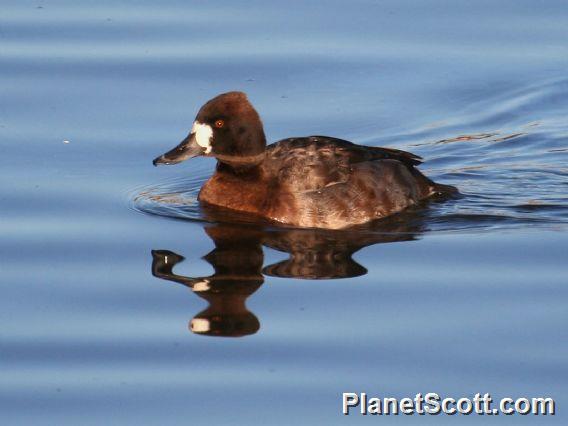Lesser Scaup (Aythya affinis)


About Lesser Scaup (Aythya affinis)
- Kingdom: Animals
- Phylum: Chordates
- Class: Birds
- Order: Anseriformes
- Family: Swans, Geese, and Ducks
The lesser scaup is a small North American diving duck that migrates south as far as Central America in winter. It is colloquially known as the little bluebill or broadbill because of its distinctive blue bill. The origin of the name scaup may stem from the bird's preference for feeding on scalp—the Scottish word for clams, oysters, and mussels; however, some credit it to the female's discordant scaup call as the name's source. It is apparently a very close relative of the Holarctic greater scaup or "bluebill", with which it forms a superspecies. The scientific name is derived from Ancient Greek and Latin, with aithuia being an Ancient Greek term for an unidentified seabird, used by Hesychius and Aristotle, among other authors, and affinis, Latin for "related to", from the lesser scaup's resemblance to the greater scaup.
Source: Wikipedia
Visits
-
2000-01-01
Hudson River, United States of AmericaA raft of them just offshore. The locals thought they might be pigeons. -
2007-01-13
Suisun Marsh, United States of America -
2007-04-11
San Diego Estuary, United States of America -
2008-01-26
Agua Vista Park, United States of America -
2010-02-21
Lerma Marshes, Mexico -
2012-07-10
Chase Lake NWR, United States of America -
2012-07-12
Yellowstone National Park, United States of AmericaDifficult to get a good look at adult with seven ducklings. -
2013-04-16
Aransas NWR (CTC 037) (Aransas Co.), United States of America -
2013-04-17
Brazoria NWR (UTC 108), United States of America -
2014-02-16
Golden Gate Park - Lloyd Lake, United States of America -
2015-01-01
Candlestick Park, United States of America -
2015-01-20
Arrowhead Marsh, United States of America -
-
-
-
-


